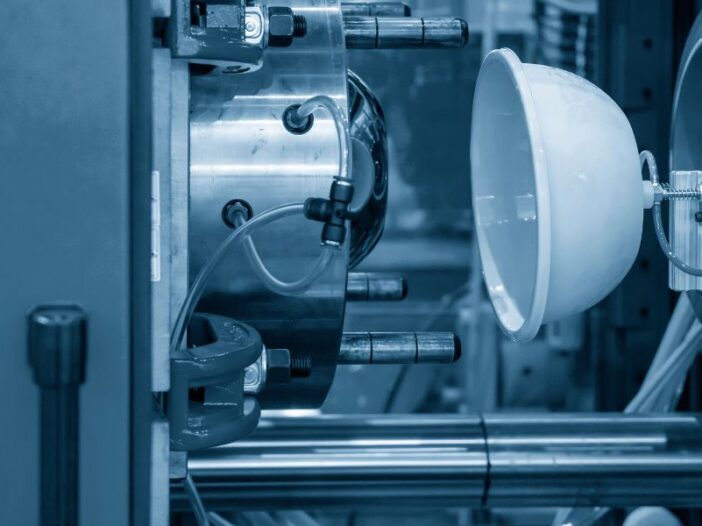
Reaction injection molding (RIM) and injection molding (IM) have revolutionized the manufacturing landscape, offering intricate solutions to complex design challenges. In the pursuit of precision, durability, and cost-effectiveness, these two methods have become cornerstones for manufacturers across a myriad of industries.
The versatility and efficiency of RIM and IM have paved the way for innovative designs and breakthrough products. Despite their widespread application, choosing between reaction injection molding vs. injection molding requires a deeper understanding of their mechanisms, benefits, and ideal usage situations.
Table of Contents
Understanding Injection Molding (IM)
Injection molding is a widely recognized manufacturing process known for producing parts in large volumes. It works by melting thermoplastic or thermosetting polymers and injecting the molten material into a mold. Upon cooling and solidification, the part is ready for use or further processing. This method is one of the best ways to improve parts manufacturing, popular for its speed, efficiency, and the ability to produce parts with intricate shapes and sizes.
Reaction Injection Molding (RIM)
Reaction injection molding is a more specialized process tailored for producing larger, more complex parts with a lightweight finish. RIM involves injecting a mixture of two liquid components, a polyol and an isocyanate, into a mold where they react and cure. This process allows for greater thickness and intricacy without compromising the component’s structural integrity. Its flexibility in materials and design makes RIM ideal for a wide range of applications, particularly for crafting prototypes or short production runs.
Comparing Materials and Applications
One of the main distinctions between reaction injection molding and injection molding is the materials used and their applications. Injection molding primarily uses thermoplastics and thermosets, making it suitable for a broader range of manufacturing applications, from automotive components to consumer goods. Reaction injection molding is perfect for producing large and intricate parts like automotive bumpers, medical devices, and enclosures for electronics.
Analyzing Cost and Production Speed
When considering production speed and cost, injection molding typically leads the race, thanks to its faster cycle times and lower material costs. It’s ideal for mass production, where the volume of parts produced easily offsets the initial high cost of creating molds. RIM’s slower curing times and higher material costs make it less efficient for high-volume production. Its lower tooling costs and the ability to produce larger parts make it a more cost-effective choice for smaller productions.
Which One To Choose?
Both processes have their strengths and applications; injection molding is a more traditional technique, but how do you know when to use reaction injection molding? Typically, if you require large and intricate parts with a lightweight finish, RIM is your go-to process. Its flexibility in design, material options, and cost-effectiveness for smaller production runs make it an attractive option. If speed and efficiency are necessary and the part’s complexity is minimal, injection molding is the best option.
Reaction injection molding and injection molding have unique advantages and applications. While IM excels in mass production and producing parts with intricate shapes, RIM is the process of choice for larger, more complex parts. Advancements in technology and materials will ensure both processes continue to play significant roles in the manufacturing industry for years to come.